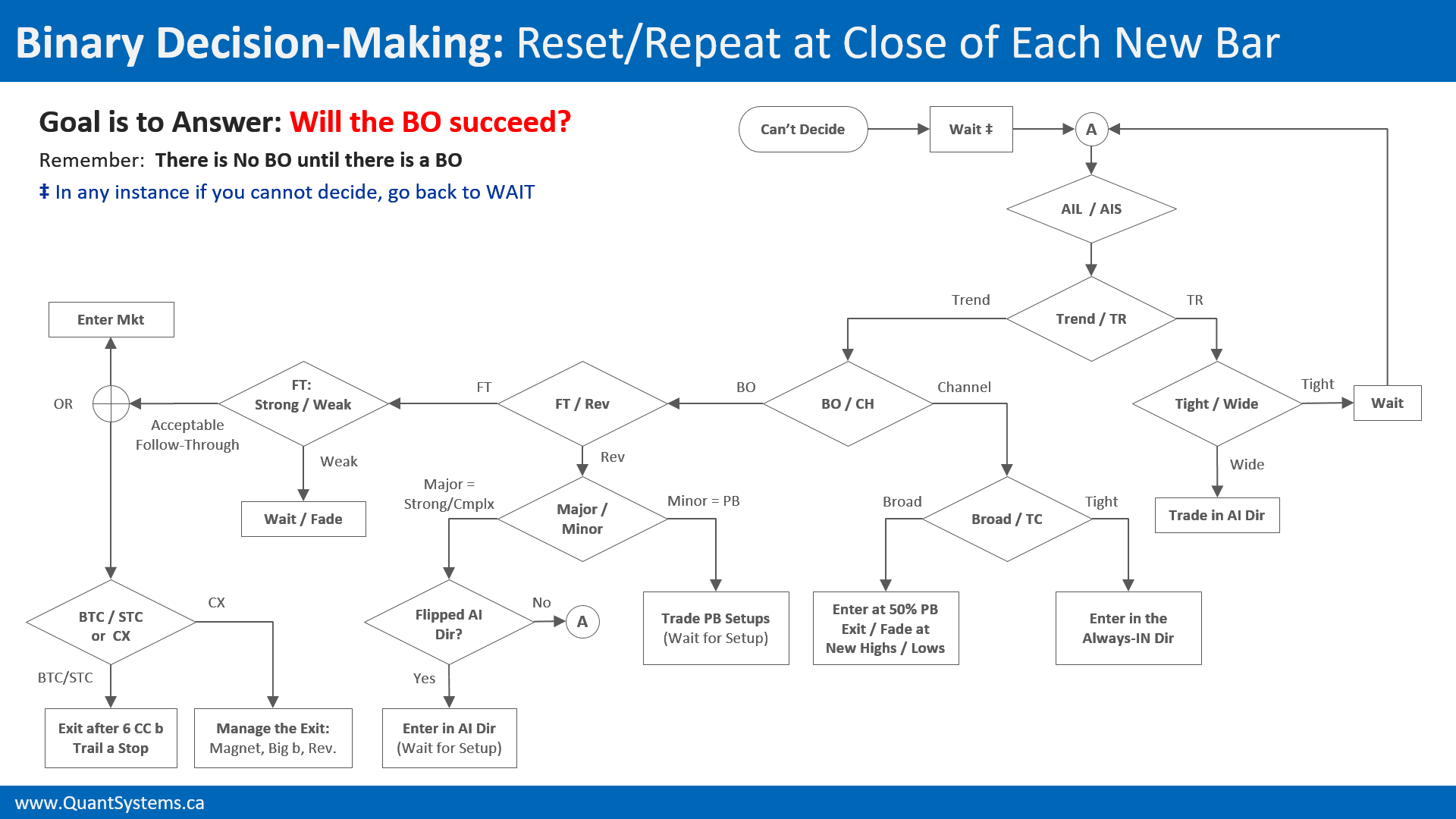This means you need much more simulation, thinking, and practice in general to be able to perform in real time when you are also under stress.
The stress comes from three sources: the money at risk, market uncertainty, and lack of time. The effect of stress on human performance is known. It reduces the information processing capacity of the conscious mind. That capacity is only 7 to 10 simultaneous information elements when you are relaxed and drops to 3 to 5 under stress, or less. Also, for certain people, for example a three-digit number can be considered three elements instead of one number or a single element.
Stress also activates the “fight or flight” process. I am not going to discuss it in detail but it means you will do whatever you are doing faster and harder. In trading, it usually translates into making the wrong decision (due to reduced mental capacity) and trading it with bigger size quickly, not waiting for bars to close or signals to complete.
This is why day traders in training must train their sub-conscious mind to process signals and make trade decisions as much as possible. The sub-conscious mind has a greater capacity for information processing and does it faster than the conscious mind. Athletes, soldiers, pilots, firemen, ER doctors, network support engineers, policemen, and other professionals who must respond quickly under stress are all trained long and intensively for their minds and bodies to develop COEXes (COndensed EXperience), which is a psychological term for training your sub-conscious. For example, when you driving and at the same time talking to your friend in the car, COEXes you have formed to skillfully drive the car are controlling the car, allowing you to take your conscious mind off the driving task and allocate it to the conversation.
The key is to rehearse your actions after seeing a specific signal enough times so that signal recognition becomes instantaneous and responses become automatic. Therefore, it is possible to trade all day without getting much tired while at the end of the day you probably won’t exactly remember what you did to make the profits you made.
To get there, in my experience, there are only two ways:
- Trade for a long enough time to gradually build the experience through the years.
- Train actively to build the required COEXes, through:
a. Selecting the best mode of learning. For me that is visual learning.
b. Identifying exactly what are the trading signals you will take, exactly what decisions must be made, and what actions follow – this is very important.
c. Mental rehearsal: close your eyes and try to visualize chart patterns and what you will do in each case. In air force fighter pilot training, pilots call this exercise “chair-flying the mission”. It is a proven technique for rapidly building COEXes.
d. Simulation: now you fly the jet after having chair-flown your mission first. Run your simulation software and do limited practice on only those scenarios you mentally rehearsed.
e. Detailed analysis of your actions in review periods, or mission debriefing.
f. Active debugging of your COEXes to remedy bad behaviors.
g. Taking responsibility for all the above so that complacency does not take over (it will also prevent you from resetting your paper money account and feel smart about it).
h. Passion for what you do to prevent boredom.
i. Setting high enough standards to motivate you to keep the pace up.
Being a visual person and a visual learner, I like to see relationships between different information elements, decisions, and possible outcomes to train myself. It is required for structuring steps b and c above, and later on as a reference for debugging in steps e and f.
You might be different. But if you are like me, I hope the visual learning flow charts that follow in subsequent articles (one article/chart per BPA setup) will help speed up your learning and shorten your journey to becoming a professional, profitable trader.


